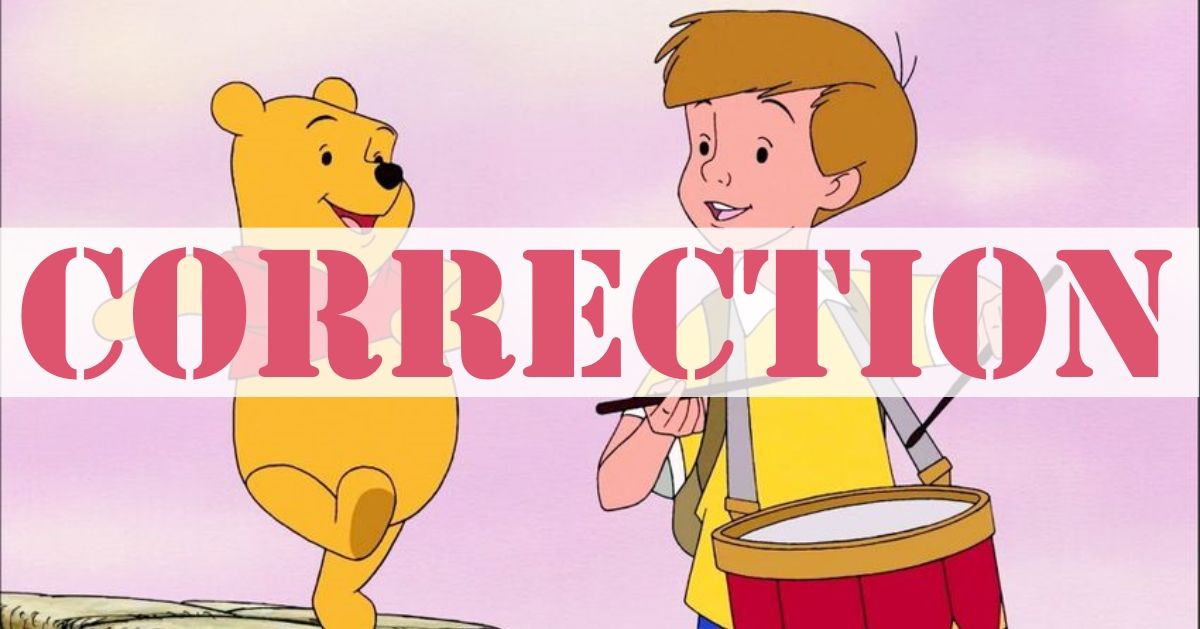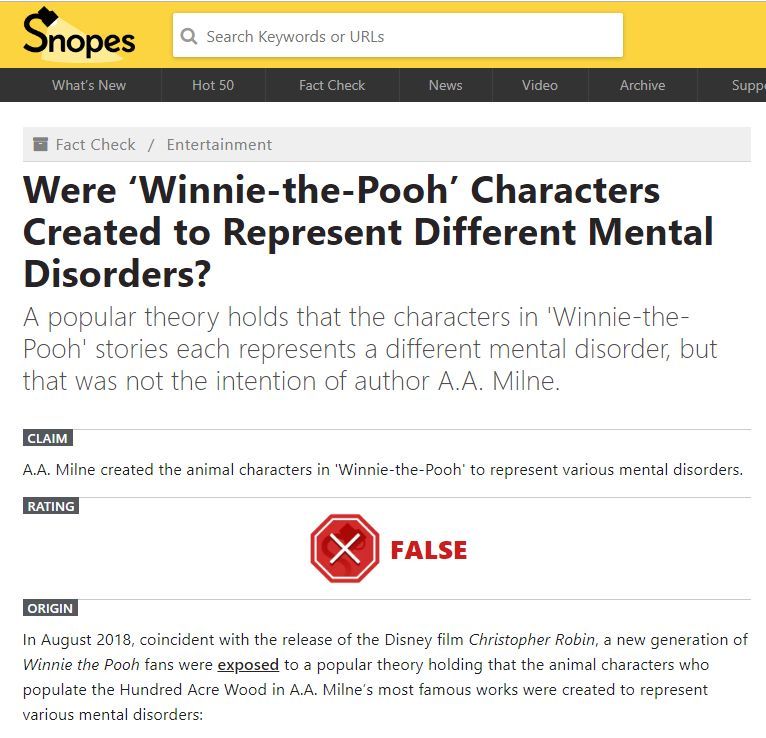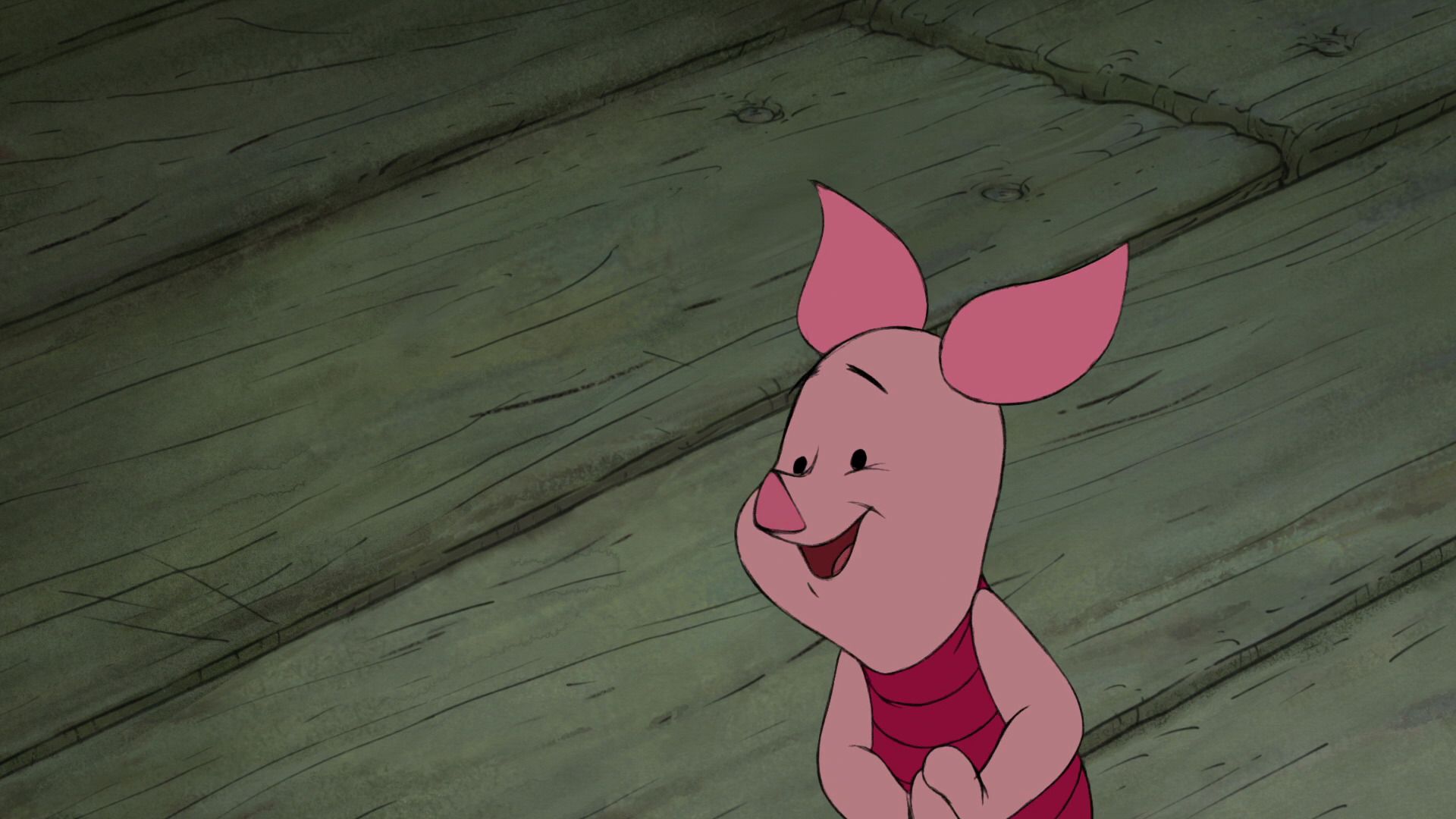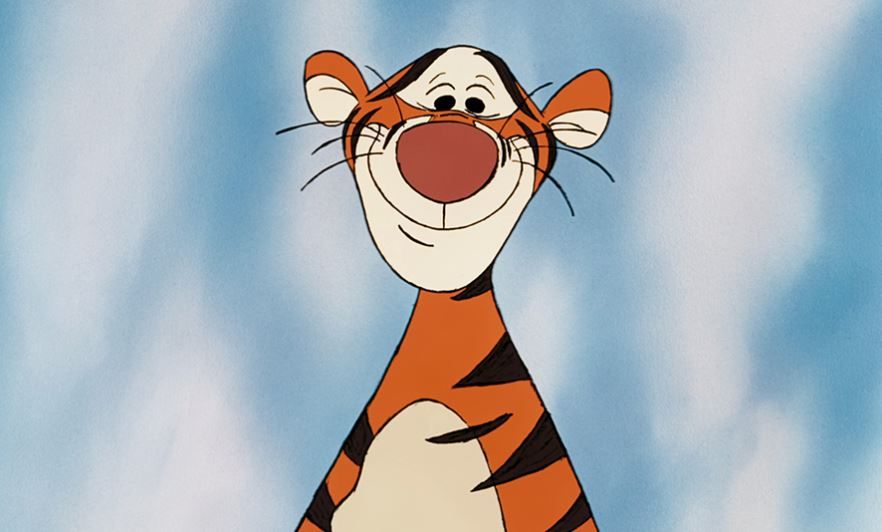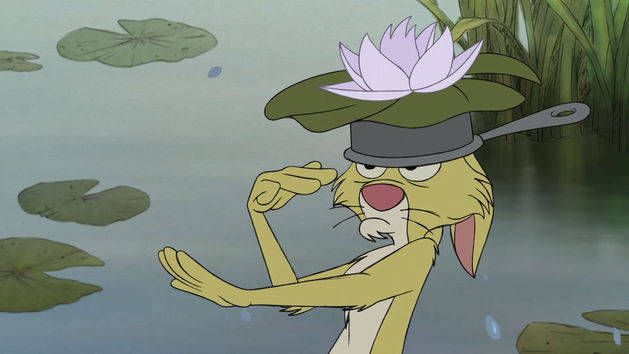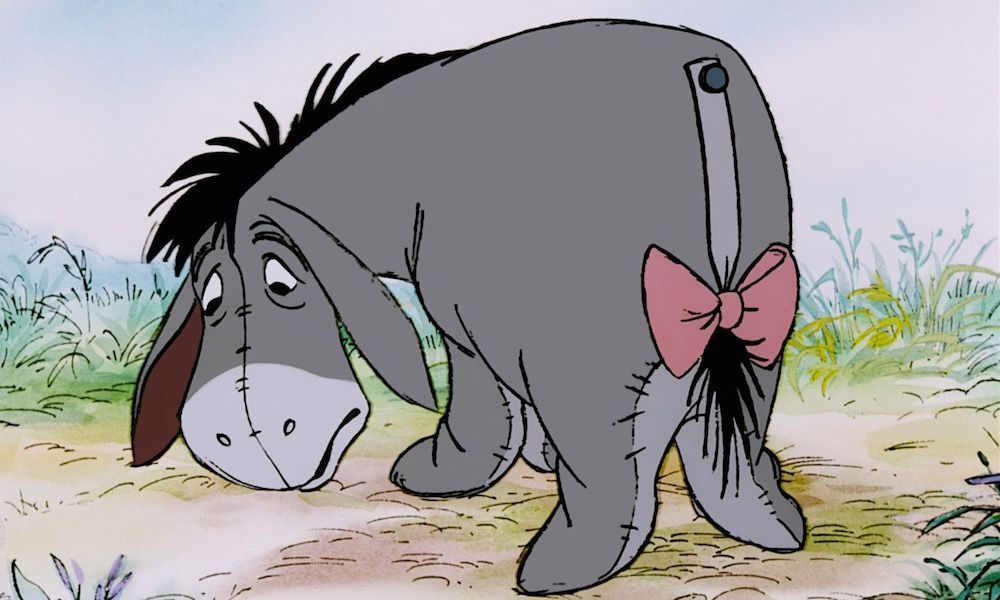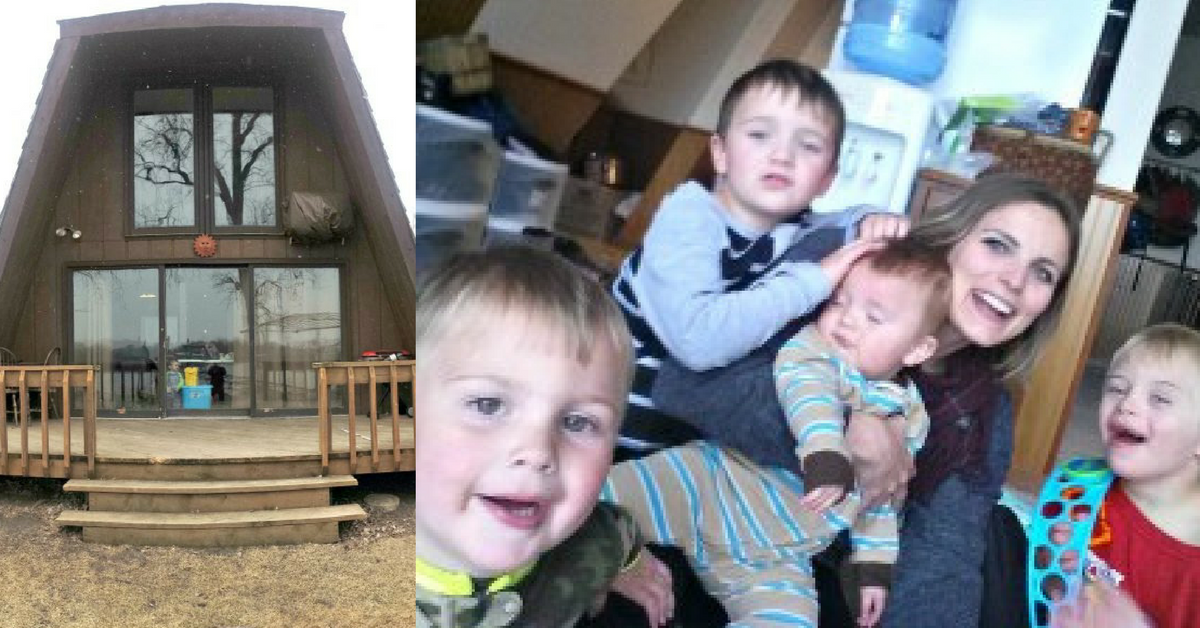CORRECTION
A previous version of this article was called "Each Winnie The Pooh Character Represents A Mental Illness, So Who's What?". We have been informed that this is in fact not true.
Here at Shared we feel like our audience is our friend, and we will talk to you exactly the way we talk to our friends. There is so much that happens around the world that we could never keep up with all of it. As broad as our topics are, we will only cover things we feel our audience wants to hear about and in this case, we felt you would be interested in the idea that Pooh Bear could have been representing mental illness. That being said, now that we know this is NOT true, we want to be transparent and let you know that too.
If you are interested in reading the full story of how it was discovered that this was untrue, head over to Snopes.com by clicking here. If you are interested in reading more about our standards and ethics policy click here, and please email any report factual errors to corrections@shared.com
If you want to read the "theory" please see below
Winnie the Pooh was my favorite as a kid. I loved everything about that cute little bear and his friends. Even as I grew up, I still held a soft spot for him. Something about Pooh bear made me feel so happy.
One year for Christmas I asked for "anything related to Pooh," and my uncle got me a roll of toilet paper. He thought it was hilarious, I did not.
But even after years of watching Winnie The Pooh, it never dawned on me that there is more to each character than we all thought. Each one has a clear connection to a common mental health disorder, and once you realize that, you'll never be able to look at them the same again.
So who's what?
Piglet
Though we always knew him to be a worry wart, not many people acknowledged that Piglet's issues stemmed from both anxiety and self-esteem issues. He is constantly afraid of new things, and seems worried about being a bother to those around him.
These are classic signs of anxiety and self-esteem issues, which affects more than 40 million people in America.
Tigger
Everyone's favorite jumpy, bumpy, clumpy, thumpy toy displays clear signs of Attention Deficit Hyperactivity Disorder and poor impulse control. He rarely thinks before he acts, and never learns from his mistakes.
Tigger also cannot calm down in serious situations where he should focus, or when he knows he needs rest. These are signs of ADHD, which 11% of American children suffer from.
Rabbit
Rabbit is often seen as the "adult" of the group, but his nagging and planning are actually likely results of obsessive compulsive disorder. He's constantly counting, arranging, planning, and stressing over small things.
When his friends do things out of order, Rabbit begins to panic and can get upset. Those who live with OCD require things to be done a certain way or else they can't move past it.
Eeyore
This one is a little more obvious, but not exactly what you think. Eeyore obviously displays signs of depression, but a more accurate representation would be chronic dysthymia. This is a type of chronic, mild depression whose symptoms can stick around for two years, as opposed to shorter episodes that depression would tend to have.
When good things happen, Eeyore is constantly ready to find the negative spin. He is not comfortable with feeling happy, because he's sure something bad is going to follow.
Roo
Little Roo has been perceived as displaying signs of being on the autism spectrum. He frequently chooses to stay close to his mom, staying in the quietness of her pouch instead of going out to play.
He also zones out despite numerous warnings, and finds himself wandering into dangerous situations. The extremeness of his characteristics could land him somewhere on the autism spectrum.
Kanga
Kanga is always nervous and skeptical about the things going on around her. Her worrying about Roo takes precedent over everything else, and it affects her relationships with other friends.
This is a sign of social anxiety disorder, and she constantly fears the worst when going out to do things with others.
Owl
Though he is the smartest out of all the Hundred Acre Wood friends, Owl suffers from dyslexia. He is the only creature in the forest who knows how to read or write, but the signs all have misspelled words or misplaced letters.
Despite his setback, Owl proves that those with learning disabilities just need to work a little bit harder in order to achieve their dreams.
Christopher Robin
The young boy talks to his imaginary friends, but it's a little more than talking. He goes on full adventures with them, and while it's easy to dismiss this as childhood imagination, there's a theory that he is actually displaying signs of schizophrenia.
Schizophrenia doesn't cause you to hear and see things that aren't there, but it can cause a "split" from reality which would explain his vivid adventures with his friends.
Pooh Bear
Winnie the Pooh is the title character, so it makes sense that he is saddled with the most disorders. Pooh Bear suffers from a binge-eating disorder where he is not satisfied until his cravings are met. He also has self-esteem issues, which generally stem from an eating disorder.
Pooh Bear is always concerned with this weight, and at the same time is concerned about when he can get more honey.
In addition, Pooh Bear suffers from Attention Deficit Hyperactivity Disorder. He often forgets what he was doing, has scattered thoughts, and has a hard time paying attention.
